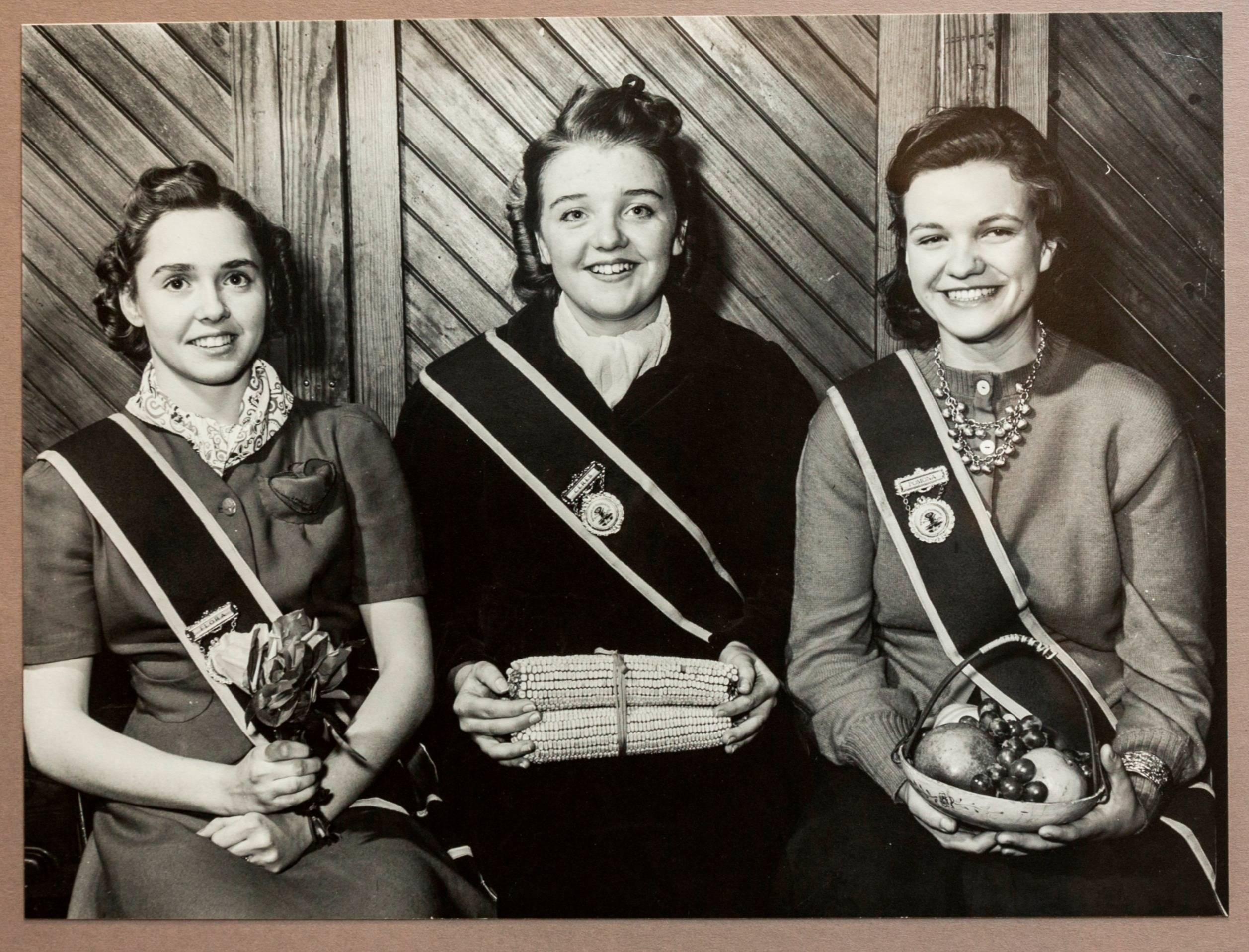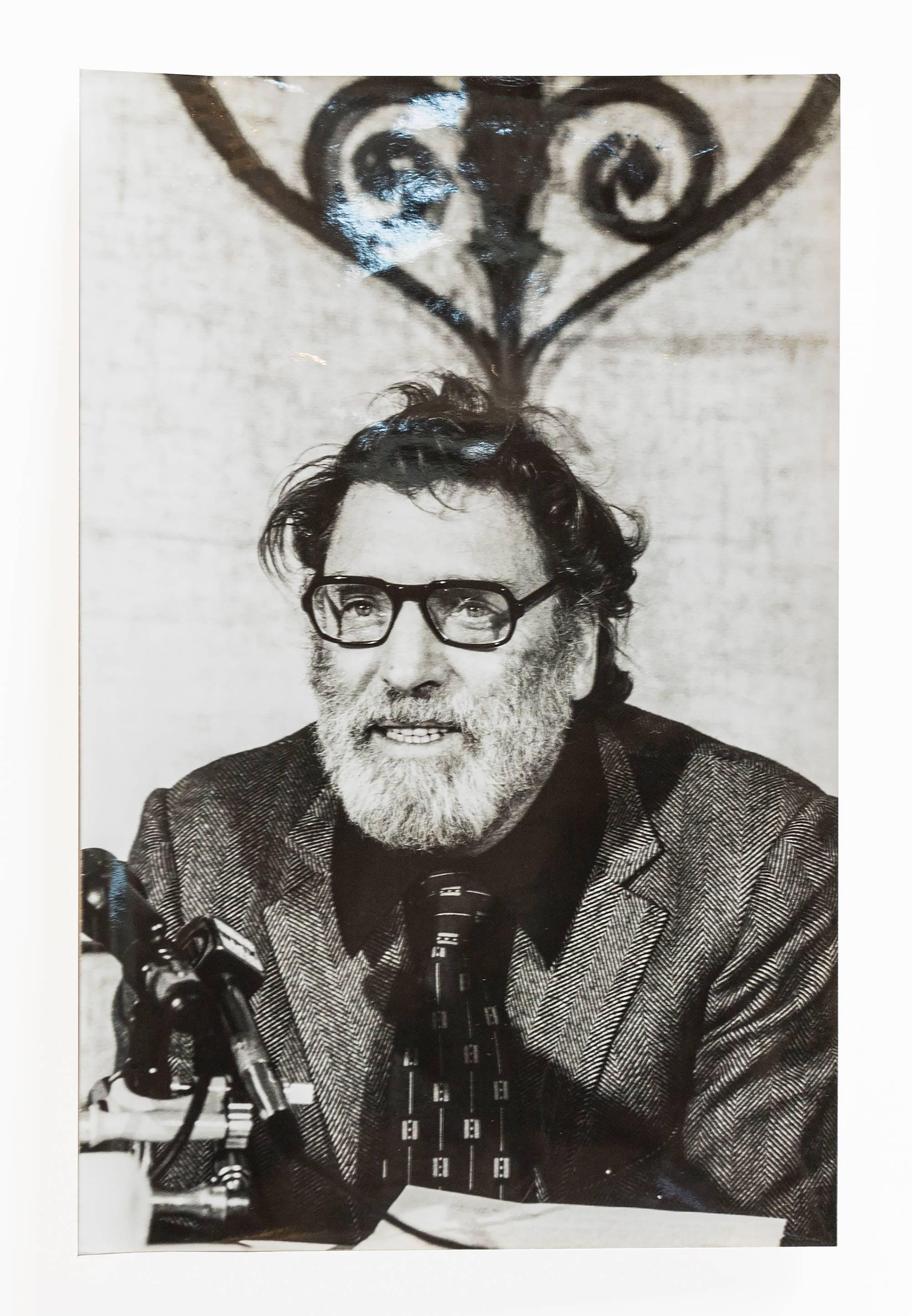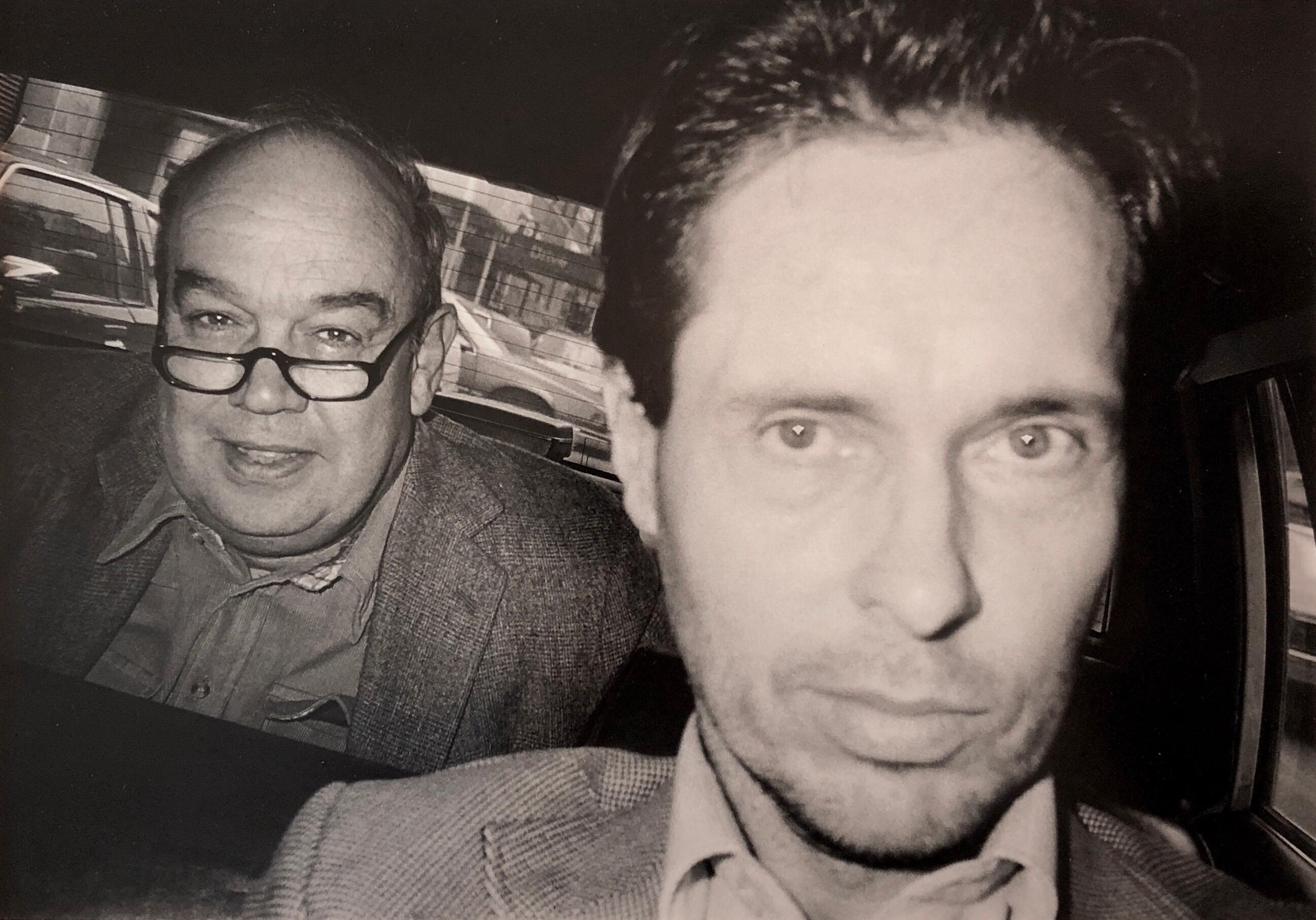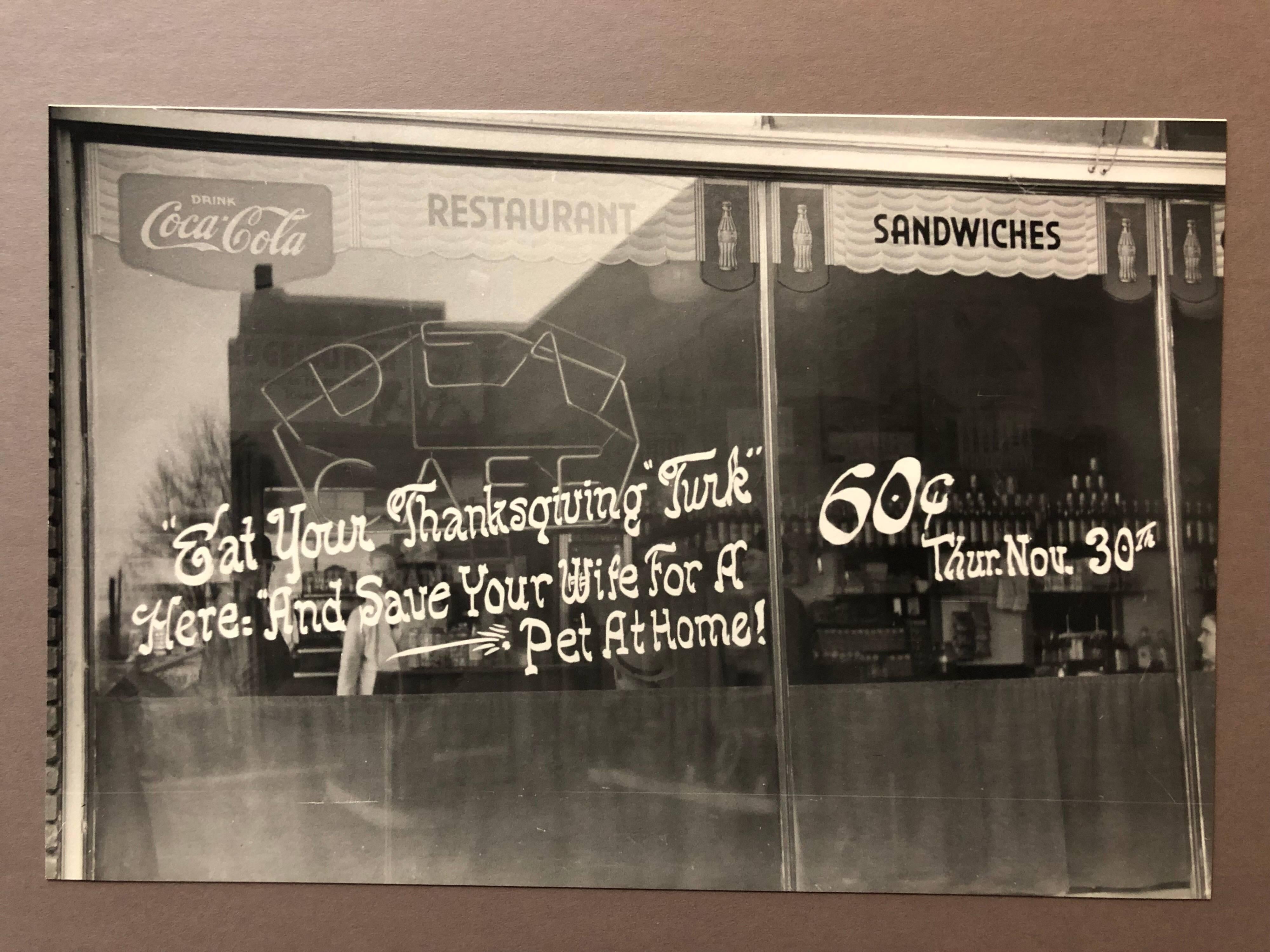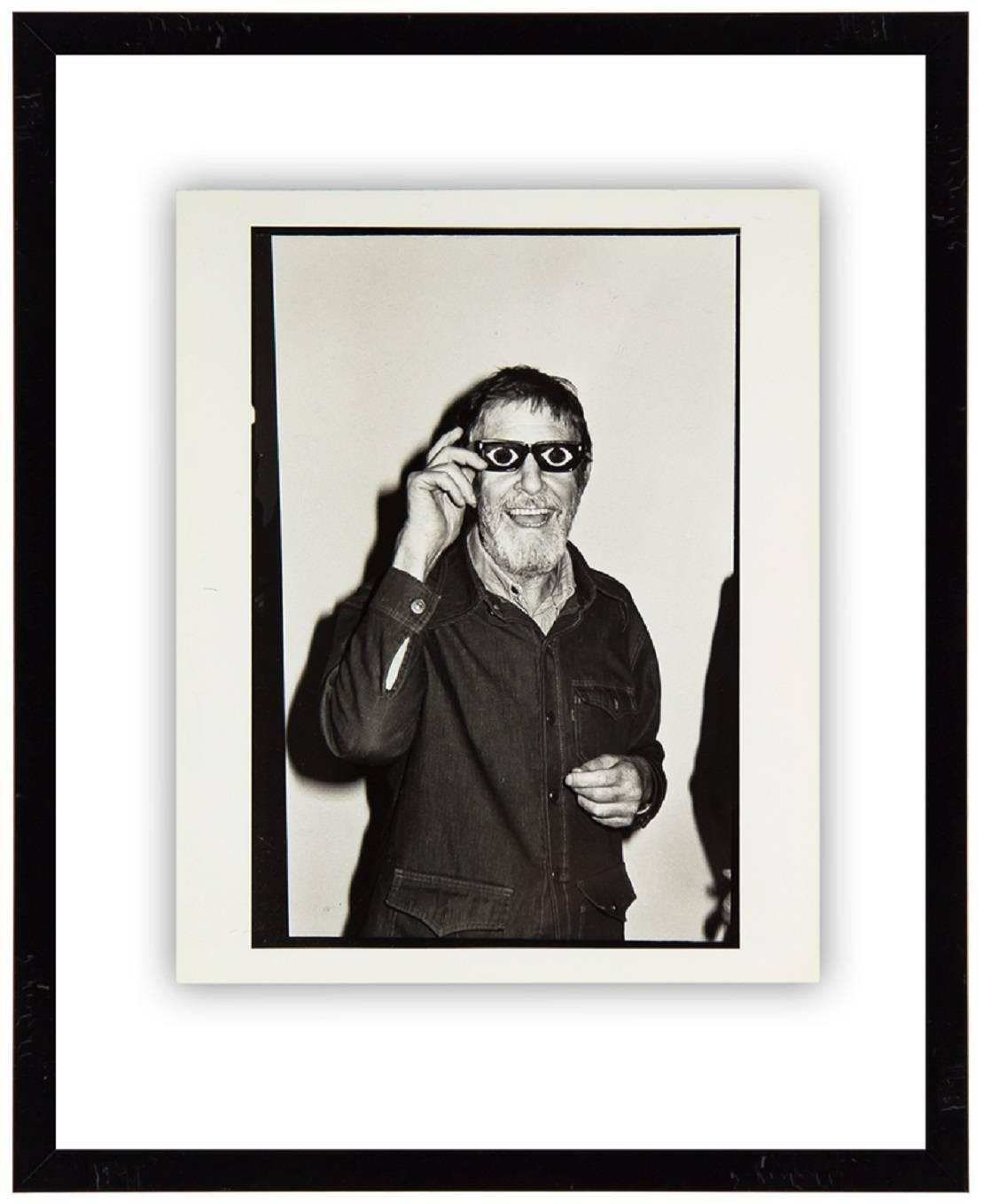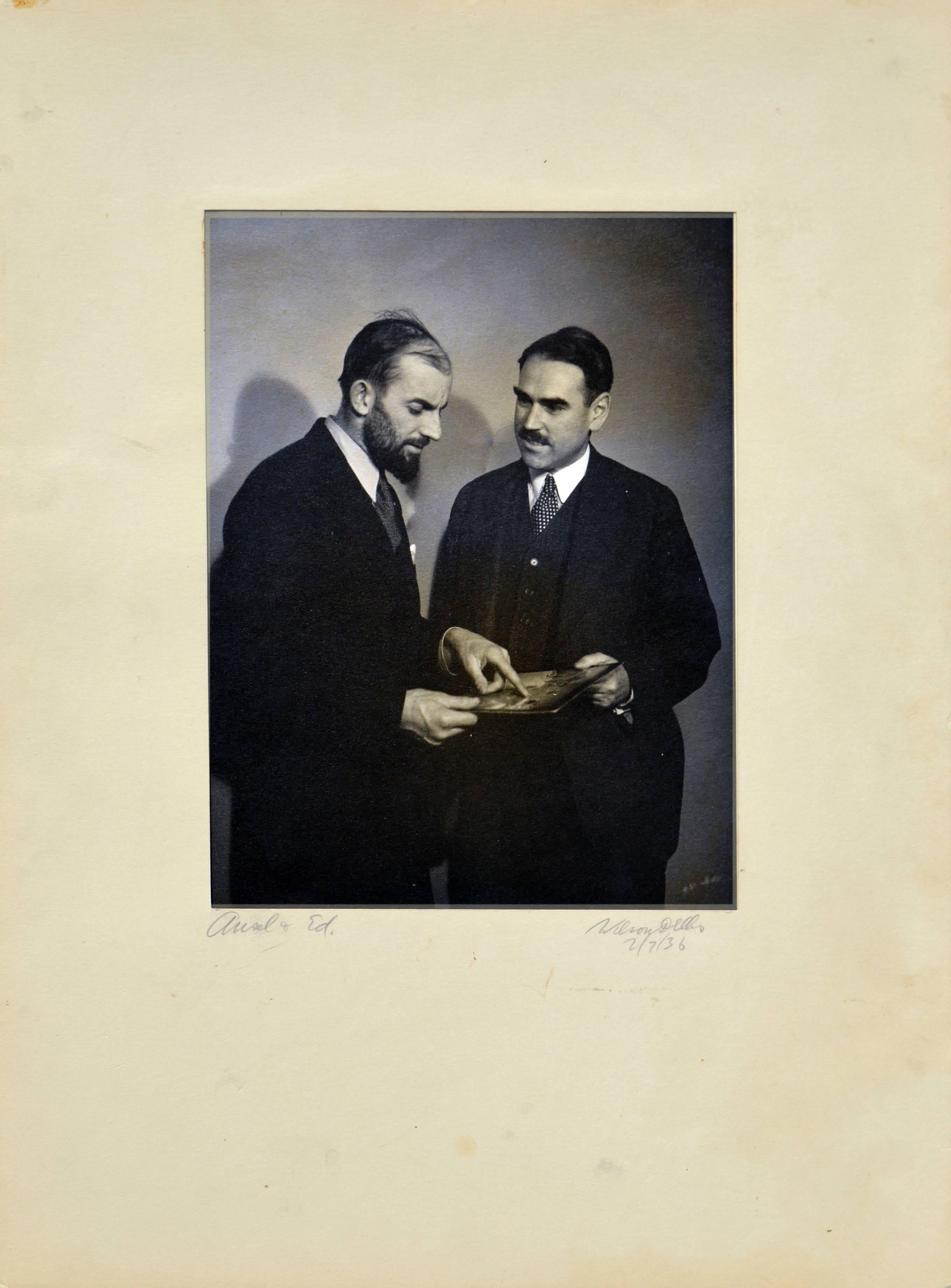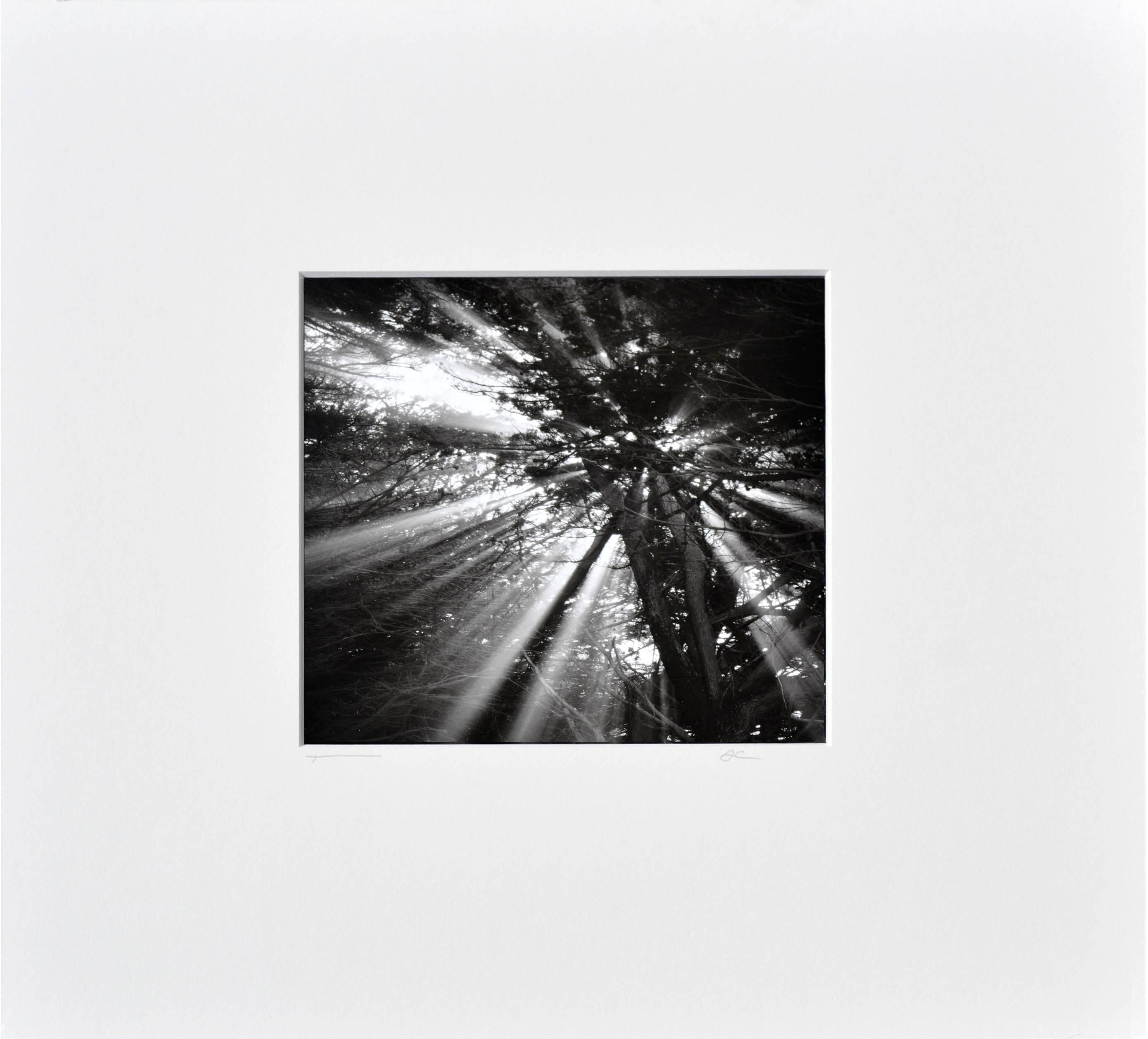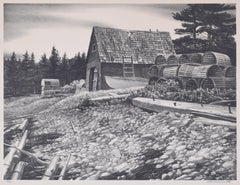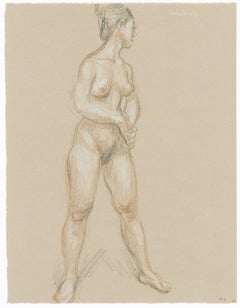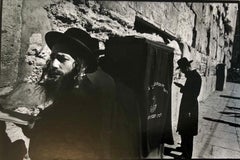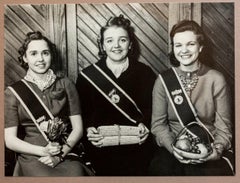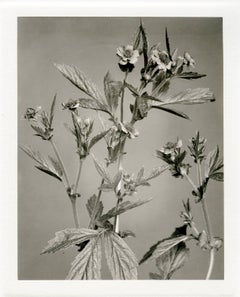
No. 365 Yellow Avens
View Similar Items
Want more images or videos?
Request additional images or videos from the seller
1 of 10
Edwin Hale LincolnNo. 365 Yellow Avens1914
1914
About the Item
- Creator:Edwin Hale Lincoln (1848 - 1938, American)
- Creation Year:1914
- Dimensions:Height: 15 in (38.1 cm)Width: 13 in (33.02 cm)
- Medium:
- Movement & Style:
- Period:
- Condition:
- Gallery Location:Fairlawn, OH
- Reference Number:Seller: FA100831stDibs: LU14010226922
About the Seller
5.0
Recognized Seller
These prestigious sellers are industry leaders and represent the highest echelon for item quality and design.
Platinum Seller
These expertly vetted sellers are 1stDibs' most experienced sellers and are rated highest by our customers.
Established in 1978
1stDibs seller since 2013
711 sales on 1stDibs
Typical response time: 1 hour
Associations
International Fine Print Dealers Association
More From This SellerView All
- Shaker Interior, Sabbathday Lake, MaineBy George TiceLocated in Fairlawn, OHShaker Interior, Sabbathday Lake, Maine Silver print, selenium toned, 1971 Signed in pencil lower right (see photo) Titled verso (see photo) Printed c. 1971 Condition: Excellent Imag...Category
1970s American Modern Black and White Photography
MaterialsSilver Gelatin
- Lobsterman's Cove, Winter Harbor, MaineBy Stow WengenrothLocated in Fairlawn, OHLobsterman's Cove, Winter Harbor, Maine Lithograph, 1941 Signed in pencil lower right (see photo) Edition 50 Impressions are in the collection of the Pennsylvania Academy of the Fine...Category
1940s American Realist Landscape Prints
MaterialsLithograph
- Standing Female NudeBy Paul CadmusLocated in Fairlawn, OHStanding Female Nude Colored chalks on tan Strathmore paper, c. 1975 Signed in chalk upper right (see photo) Condition: Excellent Housed in an 8 play acid free rag matting S...Category
1970s American Realist Nude Drawings and Watercolors
MaterialsChalk
- Studio FlowersBy Robert KipnissLocated in Fairlawn, OHStudio Flowers Lithograph, 1982 Signed lower right (see photo) Numbered lower left Edition: 120 (42/120) (see photo) Condition: Mint condition Two bits of hinge residue verso Image size: 24 x 18 inches Sheet size: 28 1/4 x 21 1/4 inches Reference: Lunde Robert Kipniss (1921 Considered one of the greatest living American printmakers, with a professional career that spans seven decades and work that can be found in over 170 museums including The Metropolitan Museum of Art, New York; The Whitney Museum of American Art, New York; Butler Institute of American Art, Youngstown, OH; The British Museum, London; the Albertina, Vienna; the Bibliothèque Nationale de France, Paris; the Royal Society of Painter-Printmakers, London; The Pinakothek der Moderne, Munich, Germany; the Los Angeles County Museum of Art; The Museum of Fine Arts, Boston; Smithsonian American Art Museum, Washington, DC; and the Art Institute of Chicago. Kipniss was elected to the National Academy of Design in 1980, and to the Royal Society of Painter-Printmakers, London, in 1998. He has received a Lifetime Achievement Award from the Society of American Graphic Artists and The Artists Fellowship. He has also received the Speicher-Hassam Purchase Award from the American Academy of Arts & Letters, as well as Honorary Doctorates from Wittenberg University and Illinois College. Selected Public Collections Achenbach Foundation for Graphic Arts, The Fine Arts Museums of San Francisco, California Palace of the Legion of Honor Albertina Museum, Vienna, Austria Albright-Knox Art Gallery, Buffalo, New York Arkansas State University Permanent Collection, State University, Arkansas The Art Institute of Chicago, Chicago, Illinois Art Museum of Western Virginia, Roanoke, Virginia Art Students League of New York, New York, New York Bates College Museum of Art, Lewiston, Maine The Berkshire Museum, Pittsfield, Massachusetts Bibliothèque nationale de France, Paris The Boston Athenaeum, Boston, Massachusetts Bowdoin College Museum of Art, Brunswick, Maine The British Museum, London Brooklyn Museum of Art, Brooklyn, New York Richard F. Brush Art Gallery, St. Lawrence University, Canton, NY The Butler Institute of American Art, Youngstown, Ohio Canton Art Institute, Canton, Ohio Carnegie Museum of Art, Pittsburgh, Pennsylvania The Century Association, New York, New York The Cleveland Museum of Art, Cleveland, Ohio Columbus Museum of Art, Columbus, Ohio Coos Art Museum, Coos Bay...Category
1980s American Realist Still-life Prints
MaterialsLithograph
- Horses Leaving the BarnBy Adolf DehnLocated in Fairlawn, OHHorses Leaving the Barn Watercolor on paper, 1940 Signed and dated lower left corner (see photo) Condition: Excellent Image: 14 1/2 x 21” Frame: 25” x 31” Provenance; Associated American Artists, New York (see photo of label) Mamdouha and Elmer Holmes Bobst Displayed in an original wormy chestnut frame with OP3 Acrylic. Most probably from the AAA Dehn watercolor exhibition of 1940. Vintage original framing chosen by the artist. Note: Elmer Holmes Bobst (1884–1978) was an American businessman and philanthropist who worked in the pharmaceutical industry. His wife, Mamdouha, was also well known philanthropist. Bobst was born in Lititz, Pennsylvania. He aspired to become a doctor, but instead, he taught himself pharmacology. After his wife Ethel composed his interview letter, he became manager and treasurer of the Hoffman-LaRoche Chemical Works by 1920. When Bobst retired from the company in 1944, he was one of the nation's highest paid corporate executives. In 1945 he took charge of the ailing William Warner Company (later Warner–Lambert) and he remained board chairman until his retirement. Bobst had close connections to President Dwight Eisenhower, but was also a close friend of President Richard Nixon. Note: In 1940, the year of this watercolor, Dehn and Elizabeth Timmerman visited Waterville, MN on their way to Colorado Sprint, Colorado where Dehn was to teach lithography and watercolor. This watercolor is obviously a view of the area around Waterville. Adolf Dehn, American Watercolorist and Printmaker, 1895-1968 Adolf Dehn was an artist who achieved extraordinary artistic heights, but in a very particular artistic sphere—not so much in oil painting as in watercolor and lithography. Long recognized as a master by serious print collectors, he is gradually gaining recognition as a notable and influential figure in the overall history of American art. In the 19th century, with the invention of the rotary press, which made possible enormous print runs, and the development of the popular, mass-market magazines, newspaper and magazine illustration developed into an artistic realm of its own, often surprisingly divorced from the world of museums and art exhibitions, and today remains surprisingly overlooked by most art historians. Dehn in many regards was an outgrowth of this world, although in an unusual way, since as a young man he produced most of his illustrative work not for popular magazines, such as The Saturday Evening Post, but rather for radical journals, such as The Masses or The Liberator, or artistic “little magazines” such as The Dial. This background established the foundation of his outlook, and led later to his unique and distinctive contribution to American graphic art. If there’s a distinctive quality to his work, it was his skill in introducing unusual tonal and textural effects into his work, particularly in printmaking but also in watercolor. Jackson Pollock seems to have been one of many notable artists who were influenced by his techniques. Early Years, 1895-1922 For an artist largely remembered for scenes of Vienna and Paris, Adolf Dehn’s background was a surprising one. Born in Waterville, Minnesota, on November 22, 1895, Dehn was the descendent of farmers who had emigrated from Germany and homesteaded in the region, initially in a one-room log cabin with a dirt floor. Adolf’s father, Arthur Clark Dehn, was a hunter and trapper who took pride that he had no boss but himself, and who had little use for art. Indeed, during Adolf’s boyhood the walls of his bedroom and the space under his bed were filled with the pelts of mink, muskrats and skunks that his father had killed, skinned and stretched on drying boards. It was Adolf’s mother, Emilie Haas Dehn, a faithful member of the German Lutheran Evangelical Church, who encouraged his interest in art, which became apparent early in childhood. Both parents were ardent socialists, and supporters of Eugene Debs. In many ways Dehn’s later artistic achievement was clearly a reaction against the grinding rural poverty of his childhood. After graduating from high school in 1914 at the age of 19—an age not unusual in farming communities at the time, where school attendance was often irregular—Dehn attended the Minneapolis School of Art from 1914 to 1917, whose character followed strongly reflected that of its director, Munich-trained Robert Kohler, an artistic conservative but a social radical. There Dehn joined a group of students who went on to nationally significant careers, including Wanda Gag (later author of best-selling children’s books); John Flanagan (a sculptor notable for his use of direct carving) Harry Gottlieb (a notable social realist and member of the Woodstock Art Colony), Elizabeth Olds (a printmaker and administrator for the WPA), Arnold Blanch (landscape, still-life and figure painter, and member of the Woodstock group), Lucille Lunquist, later Lucille Blanch (also a gifted painter and founder of the Woodstock art colony), and Johan Egilrud (who stayed in Minneapolis and became a journalist and poet). Adolf became particularly close to Wanda Gag (1893-1946), with whom he established an intense but platonic relationship. Two years older than he, Gag was the daughter of a Bohemian artist and decorator, Anton Gag, who had died in 1908. After her husband died, Wanda’s mother, Lizzi Gag, became a helpless invalid, so Wanda was entrusted with the task of raising and financially supporting her six younger siblings. This endowed her with toughness and an independent streak, but nonetheless, when she met Dehn, Wanda was Victorian and conventional in her artistic taste and social values. Dehn was more socially radical, and introduced her to radical ideas about politics and free love, as well as to socialist publications such as The Masses and The Appeal to Reason. Never very interested in oil painting, in Minneapolis Dehn focused on caricature and illustration--often of a humorous or politically radical character. In 1917 both Dehn and Wanda won scholarships to attend the Art Students League, and consequently, in the fall of that year both moved to New York. Dehn’s art education, however, ended in the summer of 1918, shortly after the United States entered World War I, when he was drafted to serve in the U. S. Army. Unwilling to fight, he applied for status as a conscientious objector, but was first imprisoned, then segregated in semi-imprisonment with other Pacifists, until the war ended. The abuse he suffered at this time may well explain his later withdrawal from taking political stands or making art of an overtly political nature. After his release from the army, Dehn returned to New York where he fell under the spell of the radical cartoonist Boardman Robinson and produced his first lithographs. He also finally consummated his sexual relationship with Wanda Gag. The Years in Europe: 1922-1929 In September of 1921, however, he abruptly departed for Europe, arriving in Paris and then moving on to Vienna. There in the winter of 1922 he fell in love with a Russian dancer, Mura Zipperovitch, ending his seven-year relationship with Wanda Gag. He and Mura were married in 1926. It was also in Vienna that he produced his first notable artistic work. Influenced by European artists such as Jules Pascin and Georg Grosz, Dehn began producing drawings of people in cafes, streets, and parks, which while mostly executed in his studio, were based on spontaneous life studies and have an expressive, sometimes almost childishly wandering quality of line. The mixture of sophistication and naiveté in these drawings was new to American audiences, as was the raciness of their subject matter, which often featured pleasure-seekers, prostitutes or scenes of sexual dalliance, presented with a strong element of caricature. Some of these drawings contain an element of social criticism, reminiscent of that found in the work of George Grosz, although Dehn’s work tended to focus on humorous commentary rather than savagely attacking his subjects or making a partisan political statement. Many Americans, including some who had originally been supporters of Dehn such as Boardman Robinson, were shocked by these European drawings, although George Grocz (who became a friend of the artist in this period) admired them, and recognized that Dehn could also bring a new vision to America subject matter. As he told Dehn: “You will do things in America which haven’t been done, which need to be done, which only you can do—as far at least as I know America.” A key factor in Dehn’s artistic evolution at this time was his association with Scofield Thayer...Category
1940s American Realist Landscape Drawings and Watercolors
MaterialsWatercolor
- Backyard IIBy Robert KipnissLocated in Fairlawn, OHBackyard II Lithograph, 1972 Signed lower right Signed lower right Annotated: Printer's Proof Reference: Karl Lunde 58 An impression is in the collection of the Art Institute of Chic...Category
1970s American Realist Landscape Prints
MaterialsLithograph
You May Also Like
- 1971 "Wintersville, Ohio" Attr. Chauncey Hare PhotoLocated in Arp, TXAttr. Chauncey Hare (1934-2019) "Wintersville, Ohio" 1971 Gelatin silver print 19.75"x16" unframed Unsigned *Custom framing available for additional char...Category
1970s American Realist Black and White Photography
MaterialsPhotographic Film, Photographic Paper, Silver Gelatin
- Jerusalem 1967 Vintage Silver Gelatin Photograph Western Wall Kotel HamaaraviBy Richard GordonLocated in Surfside, FLRichard Gordon was born in Chicago in 1945. He studied Political Science at the University of Chicago and did not begin photographing until he worked at a photography studio in 1965. Early in Gordon’s career, Robert Frank critiqued his work and stated that he “loved photography too much.” Gordon frequently makes photographic references in his work and pays homage to the photographers who influenced him: Eugène Atget, Walker Evans, Robert Frank and Helen Levitt. Bookmaking has been an important element of Gordon’s photography from the beginning; he created his own press, Chimaera Press, and published Meta Photographs (Chimaera Press, 1978), One More for the Road: The Autobiography of a Friendship 1966-1996 (Flâneur Bookworks, 1996), American Surveillance: Someone to Watch Over Me (Chimaera Press, 2009), and Notes from the Field (Chimaera Press, 2012), as well as handmade and limited edition books. Richard Gordon’s photographs are represented in many institutional collections including: Art Institute of Chicago; Bibliothéque National, Paris; Centre Nationale de la Photographie, Paris; Corcoran Gallery of Art; J. P. Getty Museum (Wagstaff Collection); Library of Congress; Museum Ludwig, Cologne, Germany; Museum of Fine Arts, Houston; New York Public Library; Oakland Museum of Art; San Francisco Museum of Art; Santa Barbara Museum of Art; Stanford Museum of Art; and University of Colorado, Boulder. From the David C. and Sarajean Ruttenberg Collection The Ruttenbergs are longtime art lovers who have collected abstract expressionist paintings, African art, sculpture, graphics, old watches and photographs-lots and lots of photographs. They started collecting them in the 1960s when the medium was still the stepchild of the arts. They kept collecting until they had more than 3,000 prints, 99 of which are in the Art Institute exhibit, ``The Intuitive Eye: Photographs from the Collection of David C. and Sarajean Ruttenberg.`` The show encompasses the entire history of photography with black-and-white and color prints from every genre, It includes street photography by Walker Evans and Garry Winogrand, glamour shots by Edward Steichen and Richard Avedon, nudes by Robert Mapplethorpe and Nicholas Muray...Category
1960s American Realist Black and White Photography
MaterialsBlack and White, Silver Gelatin
- Grange Meeting Fairfax County Virginia January 1940 Vintage Silver Gelatin PrintBy Arthur RothsteinLocated in Surfside, FLphoto is 9X13.5 (image size), 16X20 is the mat. Mounted to original mat. Vintage photograph. Three young Grange members represent Flora, Ceres and Pamona in Fairfax, 1940. Arthur Rothstein ( 1915 – 1985) was an American photographer. Rothstein is recognized as one of America’s premier photojournalists. During a career that spanned five decades, he provoked, entertained and informed the American people. His photographs ranged from a hometown baseball game to the drama of war, from struggling rural farmers to US Presidents. Rothstein was born in Manhattan, New York City, and he grew up in the Bronx. He was a graduate of Columbia University, where he was a founder of the University Camera Club and photography editor of the Columbian. Following his graduation from Columbia during the Great Depression, Rothstein was invited to Washington DC by one of his professors at Columbia, Roy Stryker. Rothstein had been Stryker's student at Columbia University in the early 1930s. Stryker hired Rothstein to set up the darkroom for Stryker's Photo Unit of the Historical Section of the Resettlement Administration (RA). Perhaps Rothstein's most famous...Category
1940s American Realist Black and White Photography
MaterialsSilver Gelatin
- Winchester Virginia February 1940 Vintage Silver Gelatin PrintBy Arthur RothsteinLocated in Surfside, FLphoto is 9X13.5 (image size), 16X20 is the mat. Mounted to original mat. Vintage photograph. Main Street, Winchester, Virginia. February, 1940. Arthur Rothstein ( 1915 – 1985) was an American photographer. Rothstein is recognized as one of America’s premier photojournalists. During a career that spanned five decades, he provoked, entertained and informed the American people. His photographs ranged from a hometown baseball game to the drama of war, from struggling rural farmers to US Presidents. Rothstein was born in Manhattan, New York City, and he grew up in the Bronx. He was a graduate of Columbia University, where he was a founder of the University Camera Club and photography editor of the Columbian. Following his graduation from Columbia during the Great Depression, Rothstein was invited to Washington DC by one of his professors at Columbia, Roy Stryker. Rothstein had been Stryker's student at Columbia University in the early 1930s. Stryker hired Rothstein to set up the darkroom for Stryker's Photo Unit of the Historical Section of the Resettlement Administration (RA). Perhaps Rothstein's most famous photo...Category
1940s American Realist Black and White Photography
MaterialsSilver Gelatin
- Burt Lancaster, Vintage 1973 Silver Gelatin Signed PhotographBy Fred McDarrahLocated in Surfside, FLGenre: Photographic Subject: Hollywood actor Medium: Photograph, Gelatin Silver Print Surface: Photographic Paper Country: United States Fred W. McDarrah, 1926-2007 Veteran Village Voice photographer Fred W. McDarrah Over a 50-year span, McDarrah documented the rise of the Beat Generation, the city’s postmodern art movement, its off-off-Broadway actors, troubadours, politicians, agitators and social protests. Fred captured Jack Kerouac frolicking with women at a New Year’s bash in 1958, Andy Warhol adjusting a movie-camera lens in his silver-covered factory, and Bob Dylan offering a salute of recognition outside Sheridan Square near the Voice’s old office. Not just a social chronicler, McDarrah was a great photo-journalist. For years, McDarrah was the Voice's only photographer and, for decades, he ran the Voice’s photo department, where he helped train dozens of young photographers, including James Hamilton, Sylvia Plachy, Robin Holland and Marc Asnin. His mailbox was simply marked "McPhoto." An exhibit of McDarrah’s photos of artists presented by the Steven Kasher Gallery in Chelsea was hailed by The New York Times as “a visual encyclopedia of the era’s cultural scene.” artists in their studios, (Alice Neel, Philip Guston, Stuart Davis, Robert Smithson, Jasper Johns, Franz Kline), actors (Dustin Hoffman, Robert De Niro on the set of “Taxi Driver”), musicians (Janis Joplin, Alice Cooper, Bob Dylan) and documentary images of early happenings and performances (Yayoi Kusama, Charlotte Moorman, Al Hansen...Category
1970s American Realist Black and White Photography
MaterialsSilver Gelatin
- NYC Cabbie and Fare Vintage Silver Gelatin Photo Black White Street PhotographBy Ryan WeidemanLocated in Surfside, FL14" x 18" sight size. 24.5 x 28 mat size. Ryan Weideman NYC taxi cab driver street photography (the good old fashioned days of yellow cabs pre Uber and Lyft). Ryan Weideman graduated with an MFA from the California College of Arts & Crafts, In 1980 he moved to New York to pursue street photography. Influenced by the other photographers of the period including Lee Friedlander and Mark Cohen...Category
1990s American Realist Black and White Photography
MaterialsSilver Gelatin
Recently Viewed
View AllMore Ways To Browse
Black And Yellow
Yellow And Black
No Return
White And Yellow Light
No War
Antique White Light
Black Plate Set
Large Plate Black
Antique American White
American Antique White
Box Camera
1914 England
Wooden Box Black
Antique Black And White Plates
The American Civil War
Philadelphia Arts And Crafts
Union Civil War
In Hale

